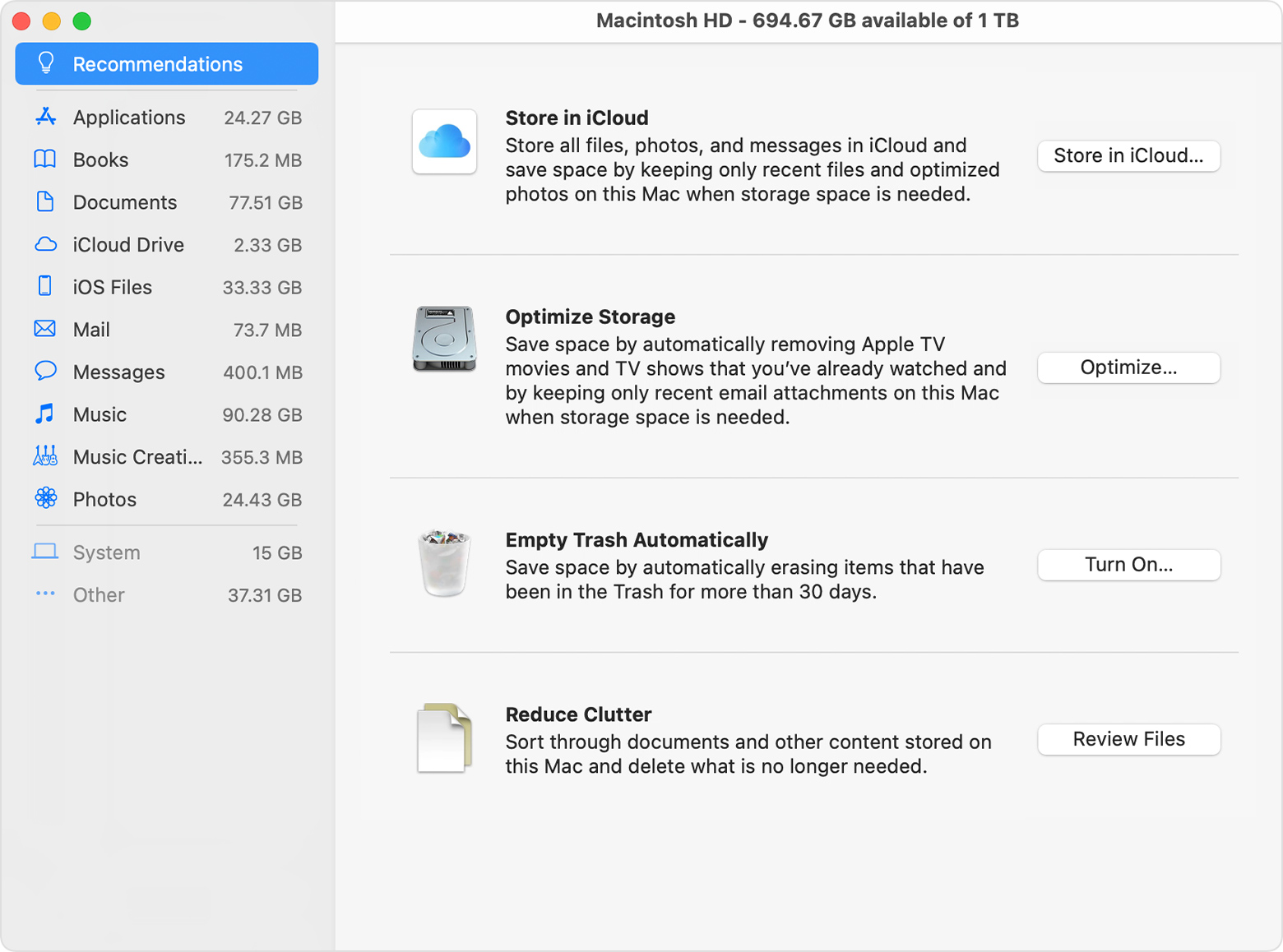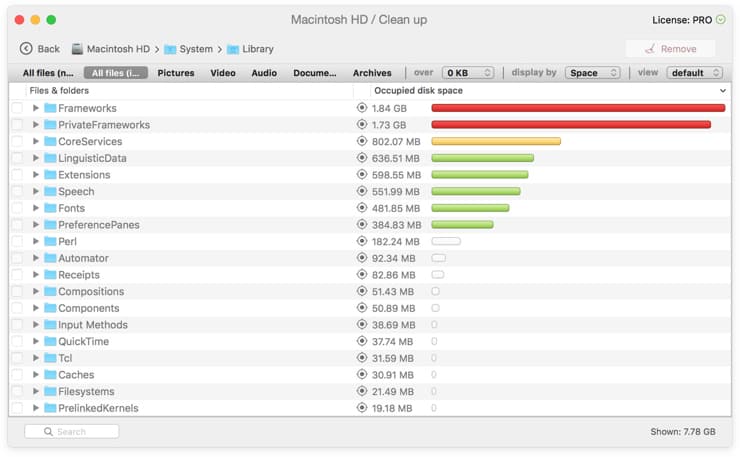Nov 20, 2020 To free up disk space, it’s helpful to know exactly what is using disk space on your Mac. A hard disk analysis tool like Disk Inventory X will scan your Mac’s hard disk and display which folders and files are using up the most space. Open the Apple menu, then select About This Mac. Click the Storage tab in the toolbar to see how much disk space you have available. (On OS X Mountain Lion or Mavericks, click the More info.
Not only Windows PC gets filled quickly but also the MacBook gets short of memory space. But no worries there are few methods to quickly free up the memory space to make some room for your essential files and documents. To delete big and bulky files, you can search and delete them manually. But the real task comes in if your Mac is full of temporary files, duplicate data, unused data, and trash cans. It’s not possible to clear them all manually.
In case you fail to clean up your Mac, it might show up “Your drive is full” error. Instead of piling up the data, it’s better to clear these documents now with the help of a few methods that are going to be discussed below.
To make your task more comfortable, you can Cleanmymac software to eliminate all the unused files. This software helps you quickly remove all the extra files, duplicate files, and the data left behind after uninstallation of any application. CleanMyMac is one of the best mac cleaner software.
Besides the software, we have a list of ways to clean up the trash files occupying the memory space.
Contents
- 1 How to Free Up Space on Mac
How to Free Up Space on Mac
1. Remove duplicate files

Removing duplicate files is one of the heavy tasks to perform. You cannot delete the duplicate files manually, as it would be time-consuming to search for such duplicate files. It becomes an issue for those users who have been using their MacBook for a long time. To overcome this, we have Gemini 2, a software that would help you remove all the trash and unused files occupying your system. The software comes with a user-friendly interface.
You can check out for this app on the app store to enjoy the software’s services. There are more software options for you to choose from.
2. Empty the trash cans
Trash cans mean all the unused goes into this location. It is the same as recycle bin in Windows. If the data goes into the trash cans, it does not get deleted permanently; instead, you can restore it if you want the data. Once you delete the data, it all goes into the trash cans. Trash can’t get wholly occupied at some point, so it’s necessary to empty those buckets. Mac has more than one trash can, so multiple cans get filled up that later on becomes a heavy task to remove the data.
3. Uninstall unused applications
It’s necessary to remove all the applications and data that are none of your use. Instead of keeping the unused software, you should completely uninstall apps on mac to free up the memory space. To delete those applications, go to the finder window to select the applications you don’t want. Select and drag the application icon to the trash can. This way, you can quickly get rid of that extra application that will make much space on your Mac.
How Do I Free Up Disc Space On My Macbook
Also, you can check which of the application is occupying how much memory space. Go to the Finder windows and select application. Now choose the ‘Show items in the list’ toolbar and see all the applications as per the app’s memory.
4. Remove the vast iTunes backup.
How To Free Up Disk Space
If you have created a backup of your iPhone or iPad using iTunes, then you might have a bunch of backup data occupying tons of memory space in your Mac. You would be able to restore around GBs of data after deleting those backup files.
It’s better and safe to use Cleanmymac that clears the confusion between the files you want to delete. Once the software names the files, then it becomes easy to remove them manually.
5. Remove temporary files

Temporary files stored in your Mac takes up a lot of space that needs to be deleted if your system shows up the disk is full error. Mac OS X automatically removes the temporary files from the system, but it’s better to get a dedicated application to remove the temporary files. Your system doesn’t need to work faster, but it will surely free up some disk space.
You can opt for Cleanmymac software to clean up the temporary files. Open up the list of the files and scan the complete data. After you select the data, tap on the clean button to remove those files. Cleanmymac offers a utility to convert the files’ confusing names into the actual characters that make it easy for you to choose and delete.
6. Check which files are taking up maximum memory.
Before opting for any option, you must check out what exactly is occupying so much disk space in your system. You can opt for hard disk analysis to check out which of the files occupies the maximum area. Disk Inventory X is such a software that will show up those data and files occupying much space. If there is any essential data stored in your system, it’s better to keep it on any external device instead of your Mac.
7. Remove language files
Mac applications come with an option to choose the language setting. It would help if you stopped using Mac language support and instead use the applications in a particular language. Mac language support uses tons of memory space in your system. Therefore it’s better to opt for the application language. To remove these extra language files, you can use Cleanmymac software to free up the disk space. You can also read the complete CleanMyMac Review

There are different ways to free up disk space to make your system work smoothly and efficiently. We hope that the above methods might help you get rid of the trash and unused files. You can opt for any of the options to clean the junk files from your Mac system. Make sure what exactly is occupying so much space so that you can easily focus on removing that particular file. You can also delete the downloaded files stored on your Mac. The download folder is usually full of huge files and data. Therefore, it’s better to delete them or keep them on an external device.
Go through the complete article and then decide what will work best for your Mac. We hope that this content would have been beneficial for all the Mac users out there.
Also Read